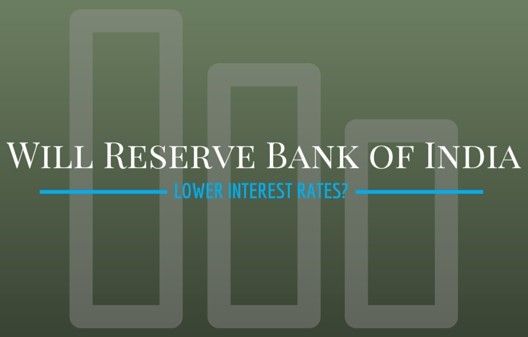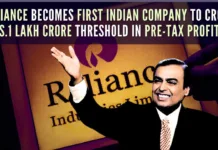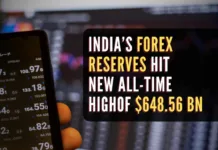
Navin Upadhyay
When the Reserve Bank of India (RBI) holds its half yearly policy review meeting on June 2, 2015, Governor Raghuram Rajan will be under intense pressure to consider the various parameters of the economy and heed to the growing demand to bring down the lending rate. There is a strong buzz in the market that the Governor would cut the repo interest rates by at least by 25 basis points, or even more, to revive the investment cycle.
Financial sector is considered as the growth engine of the economy world over, and Rajan cannot turn a blind eye to the grim data emerging from the stables of widely respected Indian conglomerates and banking sectors. The March quarter results of companies in the listed universe have sent one message loud and clear: Indian corporate sector is badly in need of affordable liquidity. Unless the RBI steps in to provide finances at cheaper rates, the companies will continues to bleed, demand will remain sluggish, employment generation will not happen, and overall sentiment will not improve.
A cursory glance at the March quarter’s results presents an alarming scenario that contradicts the euphoria in the stock market and claims by the Government functionaries about revival of the economy. Out of nearly five hundred companies researched by us, more than half show decline in both profit and growth. Even rock solid companies such as Infosys, Tata Consultancy Services and Wipro have not remained immune to all pervasive economic fatigue. With few exceptions, the IT companies reported the worst number in the nine months – average 8.6% annual growth in net sales and a 9.8% rise in net profits. These numbers were far below the street expectations, and since the IT companies have major presence in the index, the collapse of Nifty and Sensex was inevitable. IT companies also need to sober up to the reality of Cloud Computing not being as labor intensive as perhaps the Y2K problem, the catalyst for the growth of India’s IT sector.
Quarterly results of Metals, Cement, Capital goods companies, Public sector banks etc., were also below par. Although some giants like Maruti and Sun Pharma, Tata Motors, Axis Bank, Kotak Bank etc, have kept the flag flying, overall it has been a very weak quarter that has given voice to the demand for a rate cut.
Analysis of the result so far shows that sales figures in most cases were down to between 2.5 to 3% on a year-over-year(YOY) basis as against 16 and 15% growth in the previous two fiscals, respectively. On a YOY basis, the operating profit is estimated to dip down by least 3% during this fiscal year while adjusted net profits is pegged at 9%, which is much lower than 15 and 17% recorded in 2013-14 and 2012-13, respectively.
The situation could only worsen in the coming quarters if remedial measures are not taken urgently. It is obvious from the results that sales are going down, meaning demand is on the decline, across sectors. In many cases, companies are able to remain in the green because of lower commodity prices, but this may not last long.
Demand for core sector goods could decline sharply during the monsoon season due to slowing down of construction activities. At the same time, the weathermen have predicted a below normal monsoon, which could affect rural demand and non-discretionary spending. So a Pizza maker like Jubilant Foodworks, which saw a major uptick in both the top and bottom line, or consumer companies such as Hindustan Uniliver, Gillette, Nestle, Marico and Dabur which reported good numbers, might find it difficult to kept their heads above water anymore because they benefited more from lower input costs than a rise in demand. Similarly, among other things, demands for tractor, four wheelers and two wheelers could nosedive if the monsoon failed to whet the appetite of the farmlands.
All these could have a bearing on the financials of the banks. The March quarter was particularly bad for the Public sector banks, who’s NPA (Non-Performing Assets) increased sharply.
The stressed assets of the PSU banks including NPAs and restructured loans have risen to Rs.712,000 crores ($111.74 billion) in FY15.
As of March 2015, while gross NPAs rose to 4.45% for the system as a whole, net NPAs also climbed up to 2.36%, shows the RBI data.
The ratings agency Crisil recently warned that the worst was not over for the Indian banks and NPA might rise to 4.5% this fiscal year…
Before the NPA infection impacts private sector banks as well, the Governor must act. If the investment cycle does not pick up in July quarter as well, and Private banks also throw in the towel , the RBI’s extra cautious policy stance may have ruined both investment and demand – and inflation may remain the only green offshoot in the all round ravage of economic destruction. That’s why it is inevitable that the RBI will cut rates in the next policy review meeting on June 2. In The Hindu, Dr. Subramanian Swamy advises the Government to ensure that the PSU Bank lending rate be set no more that 9% and working backwards from this number, it would mean that RBI should be looking at cutting rates by at least 1% for the changes to take effect.
- The rise of Patanjali:An Indian yogi’s challenge to MNC giants - January 26, 2016
- Padmas – a blend of excellence, politics and ideology - January 25, 2016
- Scared of hispopularity, British wanted to hang Netaji - January 24, 2016










